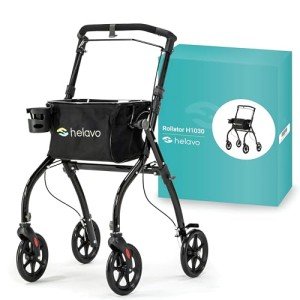The Underrated Companies To Follow In The Handicapped Walker Industry

The Essential Guide to Handicapped Walkers: Enhancing Mobility for Individuals with Disabilities
Walking help play a critical role in boosting the quality of life for individuals with handicaps. Amongst these, handicapped walkers, likewise called walkers or rollators, are important tools that help users in keeping mobility, self-reliance, and security. This blog site post intends to supply an in-depth overview of handicapped walkers, discussing their types, advantages, and key considerations for users when choosing a walker that best matches their needs.
Tabulation
- What Is a Handicapped Walker?
- Kinds Of Handicapped Walkers
- Requirement Walkers
- Two-Wheeled Walkers
- Four-Wheeled Walkers
- Features to Consider When Selecting a Walker
- Advantages of Using Handicapped Walkers
- FAQs
- Conclusion
What Is a Handicapped Walker?
A handicapped walker is a mobility aid designed to assist people who have difficulty walking or preserving balance due to disabilities, injuries, or aging. It provides support, stability, and security, helping users navigate their environment with higher confidence and self-reliance. Handicapped walkers can be found in numerous styles to suit different mobility obstacles, making them flexible tools for many individuals.
Types of Handicapped Walkers
Comprehending the different types of walkers is crucial for picking the best one. Below is a summary of the main kinds of handicapped walkers:
| Type | Description | Ideal For |
|---|---|---|
| Requirement Walkers | Basic frame with no wheels, requiring the user to lift it to move. | People with stable balance. |
| Two-Wheeled Walkers | A lightweight walker equipped with two front wheels for easier motion. | Users needing more mobility support. |
| Four-Wheeled Walkers | A more advanced model with four wheels, handlebars, and often a seat. | Those needing maximum support and rest choices. |
1. Requirement Walkers
Standard walkers, the most standard variation, are constructed as a tough frame. Users lift the walker and location it forward, enabling constant movement. This type of walker is perfect for people with limited mobility but who keep good balance.
2. Two-Wheeled Walkers
These walkers integrate 2 front wheels, significantly improving maneuverability compared to standard walkers. Users can press the walker instead of lifting it, making it much easier to browse.
3. Four-Wheeled Walkers
Likewise referred to as rollators, four-wheeled walkers included wheels on all four legs, making them easy to press. Numerous designs likewise feature a comfortable seat and backrest, allowing users to take breaks throughout longer walks or outings.
Features to Consider When Selecting a Walker
Before purchasing a handicapped walker, it's vital to evaluate certain features that may improve the user experience and safety. Here are some important factors to consider:
| Feature | Description |
|---|---|
| Weight Capacity | Ensure the walker supports the user's weight. |
| Height Adjustability | Look for adjustable handlebars for a proper fit. |
| Wheels Quality | Take a look at if the wheels are robust for numerous terrains. |
| Brake System | Identify if it has a reliable braking mechanism for security. |
| Storage Options | Think about if it has a basket or bag for individual products. |
Advantages of Using Handicapped Walkers
The advantages of using handicapped walkers extend beyond mobility, offering psychological and physical benefits:
- Increased Independence: Walkers allow users to move around without relying excessively on caregivers or household members.
- Improved Safety: With boosted stability, walkers significantly reduce the danger of falls, adding to a more secure living environment.
- Improved Confidence: Users typically report feeling more secure and confident when utilizing a walker, motivating them to engage more in social activities.
- Health Benefits: Regular use of a walker can promote physical activity, leading to much better cardiovascular health, improved muscle tone, and total wellness.
FAQs
1. How do I understand which kind of walker is best for me?
Selecting the best walker depends upon your physical abilities and mobility requirements. Consulting with a health care professional or occupational therapist can offer customized suggestions based on your particular health situation.
2. How should I preserve my walker?
Frequently check your walker for wear and tear, mainly focusing on the wheels and brakes. Clean down surface areas with a damp cloth to keep it clean and store it in a dry location when not in use.
3. Can I use a walker on unequal surfaces?
While some walkers are better matched for irregular surfaces than others, caution is encouraged. It may be useful to select a walker with bigger wheels for better stability on such terrains.
4. Exist walkers designed specifically for outdoor use?
Yes, numerous four-wheeled walkers are specifically developed for outdoor usage, featuring larger wheels and more robust building to manage different surfaces.
5. Do walkers come in different colors or designs?
Yes, various styles, colors, and designs are available to accommodate individual preferences while still satisfying practical requirements.
Handicapped walkers are transformative aids that can substantially improve the quality of life for individuals facing mobility difficulties. By understanding the types of walkers, their features, and the advantages they offer, users can make informed choices that line up with their individual mobility requirements. As Easy Maneuver Walker and design develop, the future of handicapped walkers assures even greater assistance and comfort, encouraging independence and an active way of life for all.

